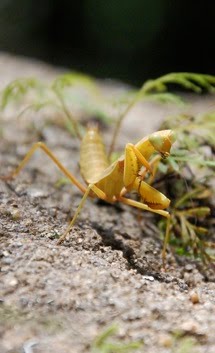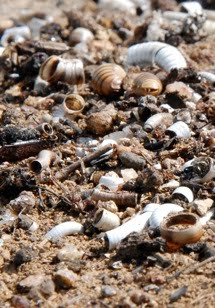I Can't See the Forest for the…Hey, What Happened to the Trees?
The once tree-covered highlands around Ankafobe.
Madagascar is a weird and wonderful world of amazing plants and animals. Huge forests with towering trees and jumping lemurs. Giraffe-sized giant birds and tortoises as big as school desks roam around the hills. It is a paradise of life found nowhere else on earth.
Or at least that was true 2,500 years ago. But ever since pesky humans showed up, paradise has slowly been disappearing. Now there are very few forests or even trees for that matter. About 90% of the lush life-giving rain forests are gone. Those big birds and lumbering tortoises are extinct and so are many of the lemurs, fish, reptiles and other unique beasties that used to call the Red Island home.
There are still little bits of this once wild wonderland, but many of those bits are in trouble too. People cut down trees for houses and cooking fires they need to survive. And some people come and cut down the oldest and most beautiful trees like Rosewood to sell for lots of money. And if a tree survives the axes and chainsaws, it may not be safe yet. Fires rage around the country in many places.
Farmers burn trees and brush to make new fields for rice, beans and manioc. But fire can quite quickly get out of control and burn much more that just one or two soon-to-be fields. And without trees, the hard rains that pour down on the island for half the year can quickly wash away the good soil that used to be protected by the trees' sheltering canopy and thick roots.
This all means that it is very important to protect what forests still survive. Missouri Botanical Garden (MBG) is one of the groups trying to protect those survivors. And my wife, Dr. Cindy, is one of the scientists helping them.
These photos are from one tiny but special patch of forest that MBG is saving. It is only a fragment of what the forest used to be. But they are working hard to save what trees are left and plant new trees to make the forest bigger.
Does saving one little patch of trees make a difference? Well, just ask a Schizolaena bush.
"Hey, where in the world am I supposed to find a talking Schizolaena bush to ask?"
Well, to be honest, nowhere. Bushes don't talk. But if you want to find a non-talking Schizolaena bush, you will have to come to Madagascar. But not just anywhere in Madagascar. You have to come to a forest. And not just any forest. You will have to come to Ankafobe, this forest fragment that MBG is fighting to save. Every Schizolaena bush in the world lives in this one tiny forest. Only 100 bushes in a forest no bigger than 50 soccer fields.
That is what is called endangered. But then again, that's better than being called extinct.












6 comments:
Just testing, Mr. Lebo. LB students are excited to read your blog with week. More to come soon.
Ms. Kirby
LB- Ms. Federico's Class
"What happened to the fish after they were washed into the rice paddy?"
"What kind of moth did you have on your blog?"
"Why did you move to Madagascar?"
"Why do those leeches want to go on your eyeballs?"
LB- Mrs. Woodson's Class
"Is there a mint on Madagascar to produce their money?"
"How is MBG protecting or replanting the endangered bush?"
"What is your favorite type of tree in Madagascar?"
Dear Ms. Federico's Class,
Many of the fish probably survived, but the farmers won't be able to get a money from harvesting them now. A lot of people use bamboo sticks to fish here. Right now seems to be a good time for fishing. I sometimes see 10 or people sitting around a rice paddy trying to catch some supper.
I don't know what kind of moth it is. I just know it is a moth. My wife and I are thinking of starting a webpage to to help people identify plants and animals in Madagascar. There aren't many books or websites like for most places in the world. And since almost everything only lives here, all those other books don't help.
I moved to Madagascar, because my wife, Dr. Cindy is here working as a botanist helping to identify and protect the plants of Madagascar.
The leeches like eyeballs, because they need a certain amount of heat and a certain amount of moisture to healthy and happy. Eyeballs just happen to provide a nice home. Leeches eat blood too and there are lots of blood vessels and capillaries on an eyeball, so maybe it's easier for them to eat too.
Dear Mrs. Woodson's Class,
I don't think so. As far as I know, the money is printed in Germany. I will be doing a post all about the money here in few weeks.
MBG is protecting the bush by keeping their forest habitat from being cut down or burned. There is a fire break around the entire forest to prevent fires. They are also growing new trees that can be planted and increase the population.
My favorite tree is the baobab. They are old, tall, fat and funny looking. You can't burn them or cut them down. And next week I'm going to try even making a cheese with their fruit (long story).
The eyeball leech is so cool and so fun because it tickles when it goes on my leg. When I went fishing I kept it and it was my favorite color, red. And I kept it and my mom said, "You can keep your eyeball leech, but don't let it go on somebody's eyeball." Dear Mr. Lebo, I like the picture of the bush.
Jose, 1st Salle
Post a Comment